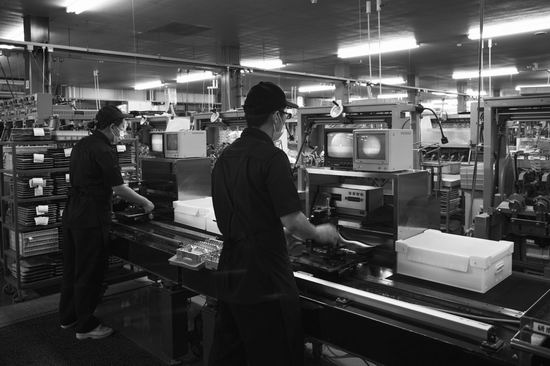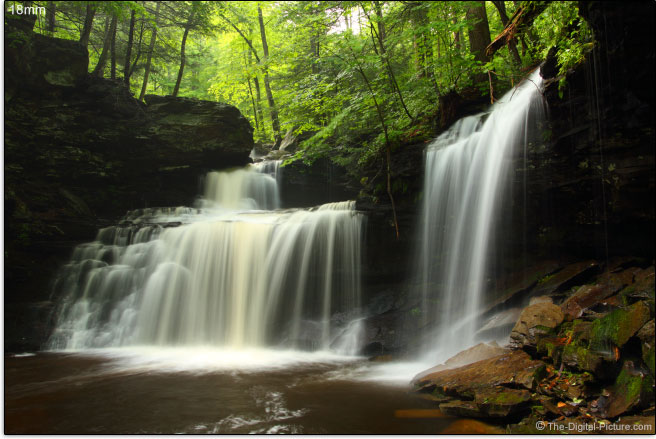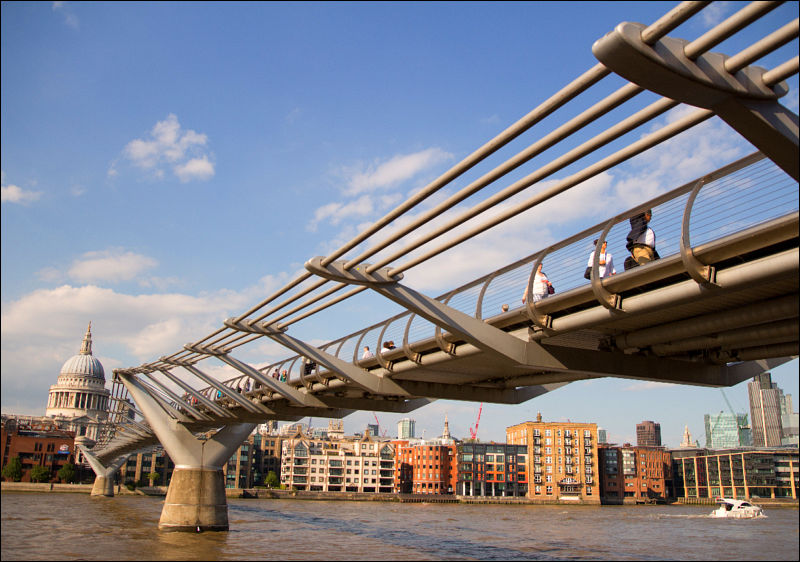
It allows to keep PV going, with more focus towards AI, but keeping be one of the few truly independent places.
-
At 810g that's almost as heavy as my Vivitar 70-210 3.5 (943g). The Vivitar needs an adapter with tripod support, otherwise it's too much for the m43 mount. My guess is that the Metabones Nikon Speed booster would nicely do two things: convert it to a 13-25mm f1.3, and optionally 31-60mm with ETC (DOF eq=f3) and provide tripod support. If this combo works it could become my go to lens. It's nice to hear in the review that focus travel is longish for focus pulling, and I remember hearing that it's parfocal aswell. Anyone?
-
Yeah, I have the same lens, good old Vivitar Series 1 (with macro setting), OM mount of course.
-
Hi everyone - have a look at an example video featuring the Sigma 18-35 on the Blackmagic Cinema Camera and Kessler Cinedrive:
-
Amazon just sent me a note saying they still don't have stock, so it looks like this lens is delayed. Maybe some heavy demand?
-
Aaron Nanto's second video is up 'focus and bokeh', the lens (his example) is not quite par focal.
-
Interview with one of lens constructor

Q: Does an access to low dispersion glass of different kind (SLD, FLD) or high refraction index glass make the work of an optics specialist noticeably easier?
A: Although low dispersion glasses are essential optics for the development for high performance lenses, using them does not explain the whole story of the success. Adequate experiences and flexible ideas are essential for lens design as it enables us to grasp the features of each optic and optimize them in the product.
Q: Why the Sigma 18-35 mm filter is 72 mm in diameter while its moderately convex front element is only 49 mm in diameter? Was it impossible to use a smaller filter?
A: Although it may not be possible to attach the 49 mm filter, attaching a frame close to that size is possible. However, the frame of the filter will cause vignetting in the edges thus it's not realistic.
Q: How the optical stabilization influences the resolution of an image? After all in such a construction there are movable elements. Is designing stabilized lenses more difficult than designing ordinary lenses?
A: We think that the optical stabilization system reduces camera shake which affects resolution. Because the optical stabilization system needs to move some of the lens groups, the lens design with OS function will be more difficult from both optical and mechanical points of view.
Q: More and more cameras, launched on the market, are mirrorless constructions, characterized by short flange focal distances. Of course such a situation demands a quite different approach to the lens construction, especially when it comes to telephoto lenses. Do you still look for new technical solutions in an active way when it comes to the optics or are the coatings the only innovation here? Or maybe the construction process is just like playing with Lego blocks, modifying slightly the same proven constructions over and over again?
A: Concerning telephoto lenses for mirrorless cameras, it's important to take the design of AF system into consideration. Rather than flange focal distance, to function the lens groups and the optimized mechanical design is more substantial element for a lens development. There are many ways to improve lens performance apart from optical technology. Thus, we are always working on any type of development for our technical innovation. Conventional designing methods have also some room for improvement, so our engineers are refining their skills by studying it thoroughly.
-
Toby Kahler has posted a nicely illustrated review of this lens with the EF-mount Blackmagic Cinema Camera.
To sum it up, i like the lens and the images it produces on the Blackmagic Camera. Its 1.8 stop is very stunning for a wide-angle zoom and it's sharp over the whole image area - even with open aperture. I didn't notice any bad aberrations or other unwanted behavior.
For me it's my new all purpose zoom on the BMCC.
This is a trailer of the upcoming movie he was talking about, showing a little of the Sigma+BMCC intercut with mostly FS700 and RED Scarlet images.
Can't really tell which shots are which, but the whole thing looks good to me! Maybe I should have started my Rokinon cine kit for Nikon/speedboostered MfT mounts with the 85mm instead of the 24mm.
-
Comparison with Rokinon 35/1.4 and Canon 24-70 f2.8L
-
Bluntys review :-)
-

Most 16, 17 or 18mm-to-something-mm lenses show very noticeable barrel distortion at their widest focal length. This lens has barrel distortion at 18mm, but it performs better than many similar lenses by showing only a modest amount. As usual, the barrel distortion is corrected as the focal length increases until essentially being gone at around 22mm. Pincushion distortion then creeps into the picture and becomes mild from 28 through 35mm.
Overall, I am very pleased with the image quality from this first-ever lens design. It has a green light for my own needs.
Featuring Sigma's HSM (Hypersonic Motor) driven AF, the Sigma 18-35mm f/1.8 DC HSM A Lens focuses with very good speed.
At short distances, this lens is practically parfocal (focus distance settings remains the same throughout the zoom range). Longer distance focusing likes more focus adjustment through the available focal length range.
The Sigma 18-35mm f/1.8 DC HSM A Lens has very smooth, perfectly-damped and ideally-sized zoom and focus rings that have no play in them
http://www.the-digital-picture.com/Reviews/Sigma-18-35mm-f-1.8-DC-HSM-Lens.aspx

 18mm-A.jpg656 x 439 - 80K
18mm-A.jpg656 x 439 - 80K -
Is there the possibility to add this lenses directly to a GH3? or do I have to use a ring adapter and lose the autofocus?
-
Is there the possibility to add this lenses directly to a GH3? or do I have to use a ring adapter and lose the autofocus?
As far as I know they do not plan to make m43 version. So best idea is to get Nikon version + Nikon G to m43 adapter, plus later get Nikon G to m43 lens turbo.
-
Grrr... still waiting for someone to try this lens out with the Metabones Speed Booster on M43. Sounds delicious but too pricey for me to take a gamble and buy both right now.
-
I went to local camera store and they told me Sigma hasn't any Nikon version of this lens yet, is that true? Also is there any particular reason Sigma don't wanna make a m43 version of the lens. You will think they should seeing now that they have BMCC MFT, and BMPCC and all the various m43 cameras.
-
I don't want to wait to get this lens, but I also don't want to wait on a mount conversion from Sigma... I wonder what the hold up is on the Nikon mount?
-
" New Item, Available for pre-order Expected availability: August 22 2013"
No wonder no one has tested it on the nikon-mft speed booster yet!
-
And Blunty has posted a fresh review of the Sigma 18-35, on the Canon 70D. He really likes this lens.
-
Just a head's up for those (myself included) waiting for the Sigma nikon mount - B&H has shifted the expected delivery date from August 22nd to September 25th.
-
B&H has shifted the expected delivery date from August 22nd to September 25th.
-
All these videos of review nerds ejaculating all over it start to get a little boring ;)
-
All these videos of review nerds ejaculating over it start to get a little boring ;)
You always have your own right hand :-)
-
.-. Finally got my Sigma 18-35 EF mount. So far, on 2.5K Blackmagic, it's amazing. Every focal length I want for the camera primarily in one fast, sharp piece of glass. Will still get a 50, and I kept my 85/1.8 Canon, along with the 12/1.6 SLR and 25/0.95 SLR (for anything hyperFast).
I also got to test the GL Optics PL rehouse of this lens on Pocket Camera and it's equally sick. It'll feel right at home with a VIewfactor'd out Pocket Cam. Really looking forward to it.

 sigma_flare.jpg1920 x 1080 - 1M
sigma_flare.jpg1920 x 1080 - 1M -
The 18-35mm delivers such extraordinary results in studio testing that it barely seems believable. However in real-world shooting it is genuinely capable of delivering wonderfully detailed images when shot wide open, at least when it's properly focused.


We've used two copies of the Canon mount version of the lens, and found autofocus to be rather hit-and-miss with both under less-than-ideal conditions (for example with low contrast subjects). Part of the problem here is that the kind of relatively small focus errors sufficient to take the edge off the image sharpness at F1.8 are essentially invisible in the optical viewfinders of SLRs, so it's difficult to spot focus errors while you're shooting. Setting up full AF microadjustment using Sigma's USB dock and Optimization Pro software certainly helps with overall focus accuracy, but doesn't eliminate shot-to-shot inconsistency.
It is not the issue with cameras with contrast AF :-)

 sens9.jpg800 x 562 - 118K
sens9.jpg800 x 562 - 118K
 sens8.jpg800 x 530 - 119K
sens8.jpg800 x 530 - 119K
Howdy, Stranger!
It looks like you're new here. If you want to get involved, click one of these buttons!
Categories
- Topics List23,964
- Blog5,723
- General and News1,342
- Hacks and Patches1,151
- ↳ Top Settings33
- ↳ Beginners254
- ↳ Archives402
- ↳ Hacks News and Development56
- Cameras2,361
- ↳ Panasonic990
- ↳ Canon118
- ↳ Sony154
- ↳ Nikon96
- ↳ Pentax and Samsung70
- ↳ Olympus and Fujifilm99
- ↳ Compacts and Camcorders299
- ↳ Smartphones for video97
- ↳ Pro Video Cameras191
- ↳ BlackMagic and other raw cameras121
- Skill1,961
- ↳ Business and distribution66
- ↳ Preparation, scripts and legal38
- ↳ Art149
- ↳ Import, Convert, Exporting291
- ↳ Editors191
- ↳ Effects and stunts115
- ↳ Color grading197
- ↳ Sound and Music280
- ↳ Lighting96
- ↳ Software and storage tips267
- Gear5,414
- ↳ Filters, Adapters, Matte boxes344
- ↳ Lenses1,579
- ↳ Follow focus and gears93
- ↳ Sound498
- ↳ Lighting gear314
- ↳ Camera movement230
- ↳ Gimbals and copters302
- ↳ Rigs and related stuff272
- ↳ Power solutions83
- ↳ Monitors and viewfinders339
- ↳ Tripods and fluid heads139
- ↳ Storage286
- ↳ Computers and studio gear560
- ↳ VR and 3D248
- Showcase1,859
- Marketplace2,834
- Offtopic1,319










